Review of SW1X DAC III, DAC III Balanced and AMP V Titan 300B Integrated Amplifier, translated in english.
Original review in dutch can be found at Hifi.nl
René van Es | 06 May 2025
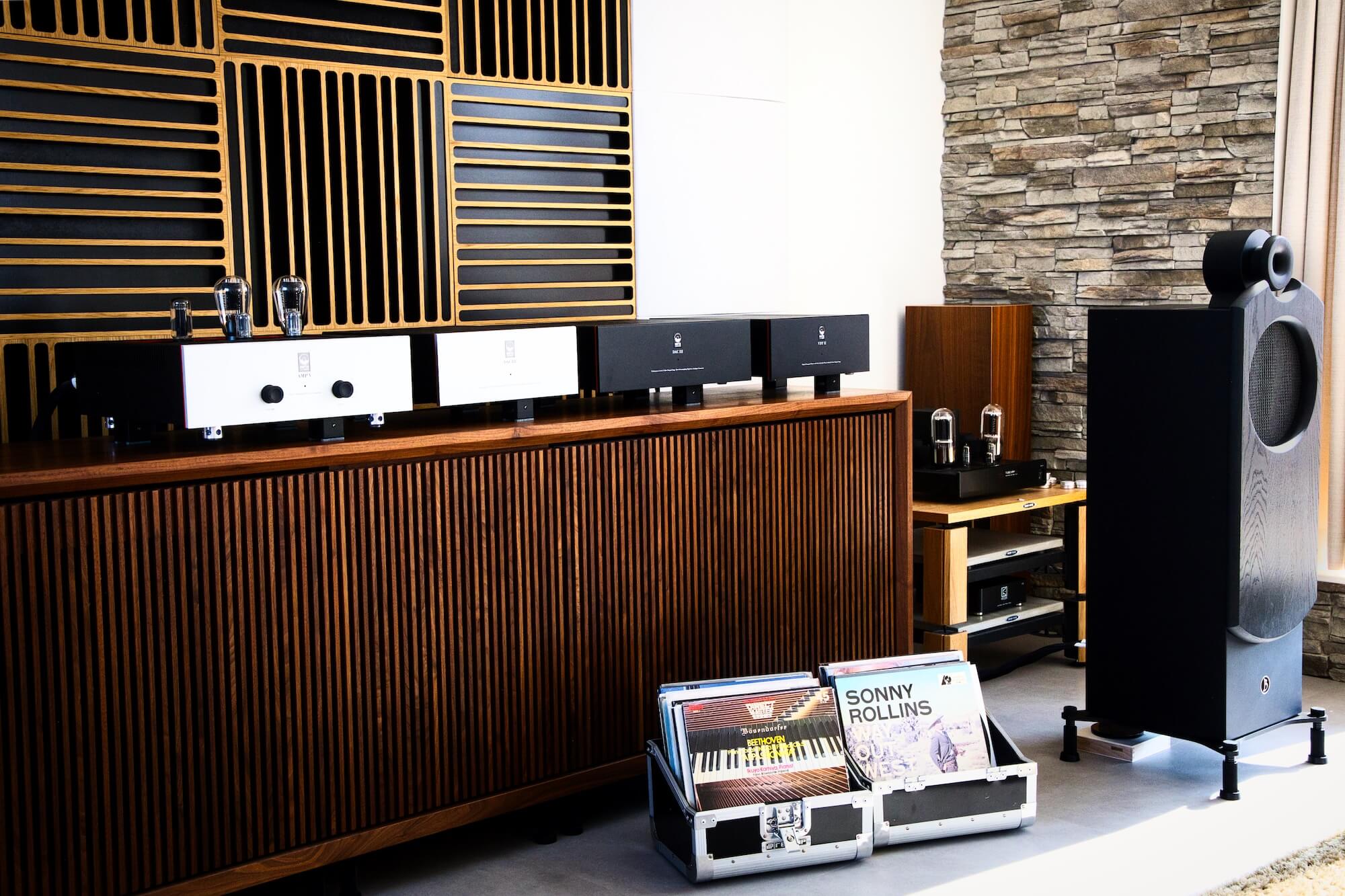
It’s always a surprise what special experience Armin Bos from Live Fidelity has in store.
During my now third visit to Live Fidelity in Utrecht (see also this HiVisit around the Bastanis Imperial Duo speakers, for example), the spotlight is on the British brand SW1X, with the almost house-brand Bastanis speakers, of course, not forgotten. A heavenly combination from the hands of Slawa Roschkow and Robert Bastani.
So heavenly, in fact, that I can’t help but start by describing the listening experience, saving the technical details and the products used for later. After all, it’s about music and the emotional experience—technology is secondary. Especially with a system like the one I now have the privilege to listen to extensively. A sneak peek: all electronic components are fairly traditional, in some ways different from what's common, fundamentally simple in design, and built as much as possible around vacuum tubes. The same more or less applies to the speakers.
First and foremost: musical enjoyment
After a short introduction and some music playing in the background, it's time to fully open my ears and play a number of tracks and artists I know well via the network transport. Indeed, these are tracks I often come back to—I need a reference point in what is still a relatively unfamiliar setting for me. Recently, Heather Nova has been a favorite with her intensely sung cover of “Waiting for a Girl Like You” from her album Other Shores. If, like me, you've listened to her voice over and over in recent weeks, it's still a shock to hear her now played so purely.
Together with Armin, I searched for a word that best describes the sound reproduction, and we settled on "pure." Pure, and definitely not purist—because that would suggest a sound stripped of emotion, warmth, or a longing for more. No, pure in the sense of unadulterated, unforced, preserving the original, untouched. Purity increases the listener’s emotional involvement. What’s clearly felt in this track, played over this system, is that Heather seems to mean every word. She bares her soul and sounds at peace. It's “just” a cover of Foreigner, yet she makes the song her own.
It hasn’t always taken a system from SW1X and Bastanis to achieve this, but a purity like today’s has never been experienced before. So what is it? The absence of digital noise and other artifacts? The lack of distortion? The imagery and intensity reminiscent of a master tape in a studio, before any commercial processing has been applied? Yes, it must be something like that which brings out this purity.
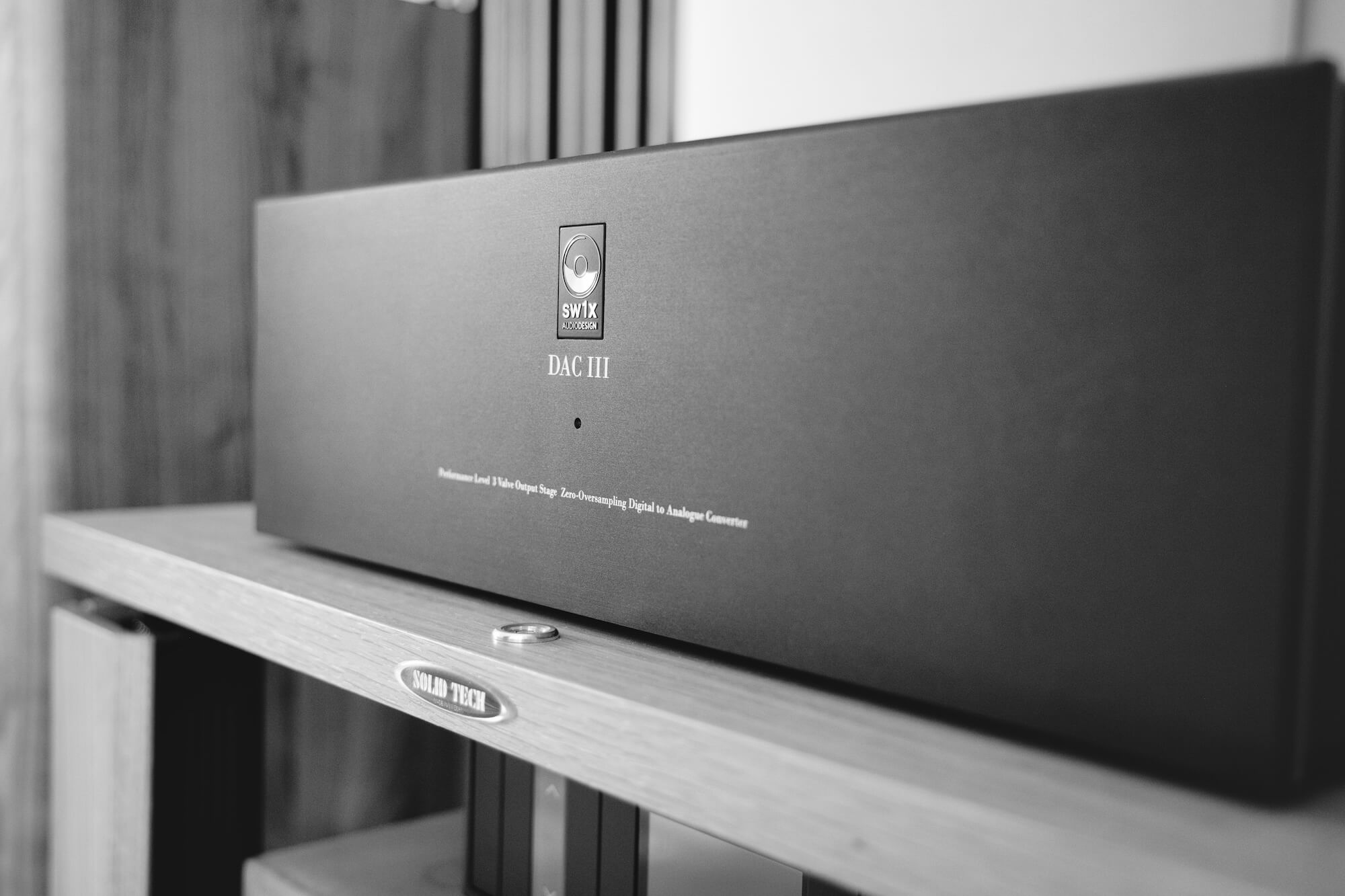
Yo-Yo Ma and Kathryn Stott perform together for the last time.
After a collaboration spanning more than a quarter of a century, Kathryn is retiring, leaving Yo-Yo to continue alone. The album fittingly bears the name Merci. A duet of piano and cello, infused with mutual respect. A natural division arises in the listening space between the sounds of the two instruments. Life-sized in scale—even though a grand piano couldn’t physically fit where the speaker is, the Bastanis manages to create the illusion that the instrument is truly present. The same goes for the cello. The reproduction is smooth, the instruments complement each other. Nothing draws attention to the technology behind the playback, although the purity makes it highly distinctive. A small point of critique, perhaps: it can sound a bit bare. Precisely because of the absence of extraneous noise or coloration from the electronics and speakers, you're brought back to the essence of the recording. The piano is full of resonance, the cello pure and tonally accurate. The instruments are clearly separated through microphone technique and yet flow together seamlessly through the Bastanis speakers. With wide dynamic range, without changing timbre whether the volume increases or decreases.
Pink Floyd revived
Time for something rougher—the clocks of “Time” from Dark Side of the Moon by Pink Floyd. I’ve played that so many times in my younger years. This time, each clock is distinctly separated, portrayed on a grand scale, within a stereo image that is tall, wide, and deep. The reproduction is tangible, almost cinematic—even though there’s no actual image, one isn’t needed; under these circumstances, my brain forms its own. The sound is beautifully transparent without falling into a technical or overly analytical tone. The stereo image is elevated, which is better than being too close to the floor—it avoids that pitfall.
Pink Floyd is reluctant at times because of the purity offered, then full and complete. Nuances are under a magnifying glass and yet musical purity remains. So far, the description “pure” is a red line. Sung words are easy to understand without exception. ‘Welcome to the machine’ goes even more and step further if it can be large, the image runs from far left to far right. SW1X and Bastanis do not make a thumping rock setup together, maybe they are too pure for that. For the assessment of tracks extremely suitable and the display is so vivid that it will work cinematically again. (My) brains respond to the sounds by generating images. Exactly what SW1X wants to achieve, by the absence of manipulations, bring the music back to the essence that the brain accepts as truth.
A Different DAC
Les Kapsberg’Girls is a group of four classically trained women—soprano, mezzo-soprano, viola da gamba, and plucked instruments—all presented to the listener. The group performs with powerful voices. Four individual personalities, unified in a setup that makes it feel as if they are physically present. The added instruments complete the experience. This is the moment Armin decides to switch DACs—from an unbalanced SW1X DAC III to the more robust balanced model. The transparency of the entire system causes another jolt of surprise.
The magnifying glass effect created by the SW1X amplifier and Bastanis speakers makes the transition feel much larger than it actually is. Still, it takes a while before I realize that the balanced model is the better one. At first, I experience this larger model as a slight step back in purity. This is because the new DAC has a slightly softer, rounder, and warmer tonal character, causing the two vocalists to no longer sound as distinctly individual. It takes some getting used to. Without effort, I now hear a more fluid and refined use of the acoustic space—or perhaps the acoustics are simply made more audible. To stick with the metaphor of “pure,” the DAC switch feels like going from pure, dark chocolate to a smooth milk chocolate. The music becomes more veiled, more intimate. At first, I think I prefer the original DAC, but as I listen longer, I begin to appreciate and become convinced by the deeper emotional expression of the balanced model.
While enjoying The Chieftains and their album Tears of Stone, specifically the track A Stór Mo Chroí sung by Bonnie Raitt, the singer steps forward. The band positions itself mostly behind her, with solo instruments in between or even beside Bonnie. A vivid stereo image that closely approaches reality. Much of the atmosphere arises from the interplay between Bonnie and the band. Even when her voice soars, the playback remains pure, and the system follows perfectly.
We switch DACs a few more times, and finally, during Danny Boy sung by Diana Krall, I’m certain: a well-balanced SW1X DAC is definitely my preference. The sound is so beautiful — including a small flute that emerges — Krall’s voice is perfectly proportioned, and the guitar sounds as full as an acoustic one can. All of it fills the space vividly right in front of me.
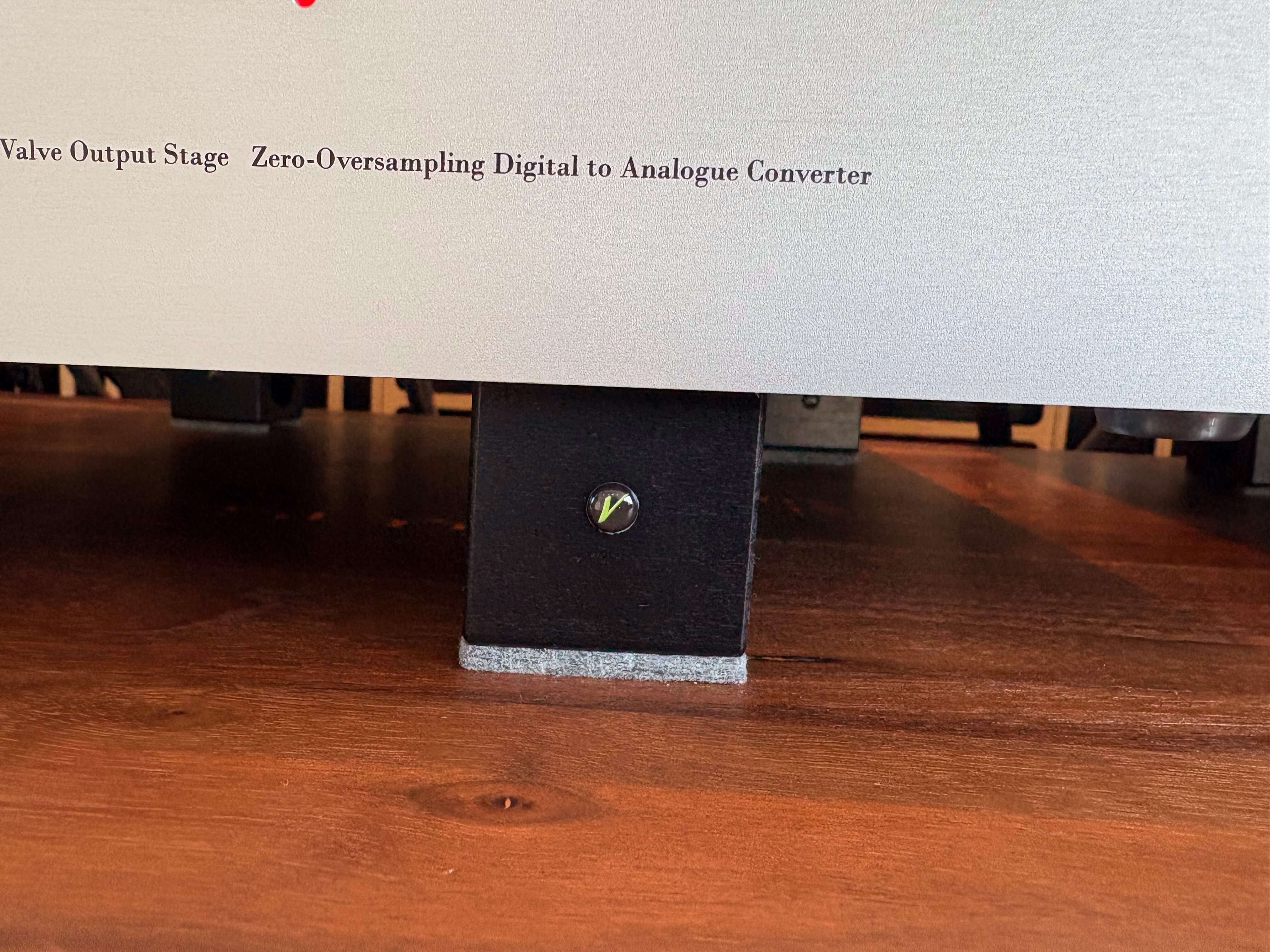
The Vortex Hifi
When changing to other music, Armin mentions that he likes to use Vortex Hifi products. I spot a Ground Optimizer, as well as Vortex feet under the equipment. Armin briefly removes a Vortex Hifi HFO Sigma plug that is connected to an XLR port on the DAC. Immediately, the system seems to produce less volume, and the music becomes less engaging, less immersive. It feels like a step back to the purity of the smaller DAC. The stereo image also becomes less deep. Although Vortex Hifi is not the focus of this visit, it leaves a strong impression on me and warrants further investigation in my own setup. Upon request, the plug is returned to the unused XLR output of the balanced DAC, and I continue enjoying the music.
It's time for piano. Under the skilled fingers of Khatia Buniatishvili, Suite Bergamasque, L75: III. Clair de Lune begins to play, from her album Motherland. Her grand piano sounds large and grounded. Clear notes retain their beautiful tone and never become harsh, let alone grating. Now that all Vortex accessories are back in use, the soundstage immediately expands. Music sparkles more, is more fun, more playful, and increasingly impressive. Even the softest notes are complete, and when Khatia transitions to more powerful playing, the instrument grows with her.
Two more or less obligatory tracks remain.
First up: Cry Me a River by The Ray Brown Trio. A rather unusual, old-school recording where bass and drums are centered, and the piano plays larger than it physically is. Bass tones are very tightly defined, making the melody easy to follow. Percussion remains gentle and caressing throughout. The piano is rendered clearly and dynamically. The SW1X with Bastanis immediately draws you into the music. You feel transported to a jazz café — one without patrons, as there’s no background chatter. The music sounds clean and... indeed: pure!
To end my session, Anouar Brahem’s Awake from the album After the Last Sky. You can now clearly hear how large an oud (instrument) is and what purity does to its tones. It’s so intense that I slightly lower the volume on the SW1X amplifier. It’s a rather powerful track, in part due to Anja Lechner’s cello playing.
Bastanis Camargue
As promised at the beginning, let’s explore the technical side of what was playing.
Let’s start with the Bastanis Camargue speakers, designed by German creator Robert Bastanis. The brand is represented in the Benelux by KlankQ, a sister company of Armin Bos. I’m told the Camargue models play slightly more laid-back and warmer than other Bastanis types, while still preserving the detail and imaging the brand is known for — friendly and accessible, dynamic and fast.
The Camargue is currently the smallest Bastanis model, available either as a regular floor-firing bass horn version for smaller rooms or, as here, in a dipole configuration that must be placed freely in the room. With a floor-firing horn still included, even the dipole version is easy to position. It adapts well to the space and, according to Armin, never causes boomy bass.
This is a high-efficiency system, needing only 3 watts to perform. The bass horn is driven by two 12-inch drivers, each with natural roll-off, and therefore working without a crossover. A dipole horn tweeter is used for the high frequencies, mounted in a waveguide atop the cabinet, filtered only by a single, high-grade Duelund CAST capacitor.
Bastanis pays close attention to every part of the loudspeaker — the cabinet with reinforcements, the feet it rests on, the fabric reminiscent of an old Philips radio, and the finish. Since each Camargue is custom-built, many finishes are possible. Woodwork and assembly are done in Amsterdam by a specialized cabinetmaker. The models in the listening room are finished in black-oiled oak. Despite their size and sound, they measure only 121 cm high, 37 cm wide, and 38 cm deep. Sensitivity is a delightful 100 dB at 8 Ohms with 1 Watt.
It should be mentioned that a Camargue does not have to be inverted.
Extra mention deserves that all interlinks and speaker cables also
Robert Bastanis was originally written in the Imperial series.
Slawa Roschkow and SW1X
Now to SW1X, a brand I had heard of but knew little about. Founder, CEO, and chief designer Slawa Roschkow lives and works in Essex, England, where a total of eight people handcraft all SW1X models.
On YouTube, Slawa explains the thinking behind SW1X: simplicity and preservation of the original signal. No filtering, no tampering — just timing and essence throughout the signal path. Signature traits include point-to-point wiring, use of paper-in-oil capacitors, and auto-biasing for all models. If tubes protrude from the chassis, no cover is provided. Build quality is first-class, with elegant front panels accented by a thin orange line, a color that sometimes also appears on the top of the unit. Standard color options are black or black with silver.
The uniqueness of SW1X is immediately apparent in the VDT II Valve Digital Transport — a streamer without a DAC. It’s a UPnP & DLNA model that runs on custom Linux software. Apps like JPlay work flawlessly. It has three separate power supplies: one for the CPU, one for the master clock, and one for the output stage. Two of these use tubes and choke coils; the CPU has a discrete solid-state power supply.
Though tube-powered master clocks exist elsewhere, this is the first transport to drive the S/PDIF output via tubes, coupled through a digital transformer. Coils and transformers are custom-wound for SW1X, with options for copper, silver-plated copper, or pure silver wire. Coupling capacitors are copper-in-oil types.
The CPU load is kept minimal to avoid timing errors, reduce PSU strain (allowing focus on quality instead of power), and to help maintain musicality. The VDT II offers AES/EBU, S/PDIF, USB, I2S, and optionally HDMI. PCM streams up to 192/32 are supported, and up to 768/32 via USB. Sample rate is adjustable depending on the DAC used.
The fact that SW1X is different is already clear with the VDT II Valve Digital Transport, say a streamer without a dac. It is a UPnP & DNLA model that works internally with proprietary Linux software. An App like JPlay works flawlessly as I could experience. The basis consists of three power supplies, one for the CPU, one for the master clock and one for the output stage. Two power supplies are realized with tubes and choke coils, the third for the CPU is a discreet semiconductor power supply. That a master clock works with tubes is also designed by others, but it is the first transport that controls the S/PDIF output with tubes and links it to the outputs via a digital transformer. Fluccles and transformers are specially wound for SW1X, where the customer can choose from various cores and materials, copper, copper with silver, or pure silver as a winding wire. Torque capacitors are copper in oil types. The CPU is burdened as little as possible for various reasons: avoiding time errors, minimal load of the own CPU power supply so that the power supply focuses on quality, does not have to focus on power. Remember that a low CPU load benefits the preservation of musicality. Furthermore, the VDT II transport is simply equipped with in and outputs for AES/EBU, S/PDIF, USB, I2S and on request with HDMI. PCM streams up to 192/32 and USB up to 768/32. The sample rate can be adjusted to the dac used.
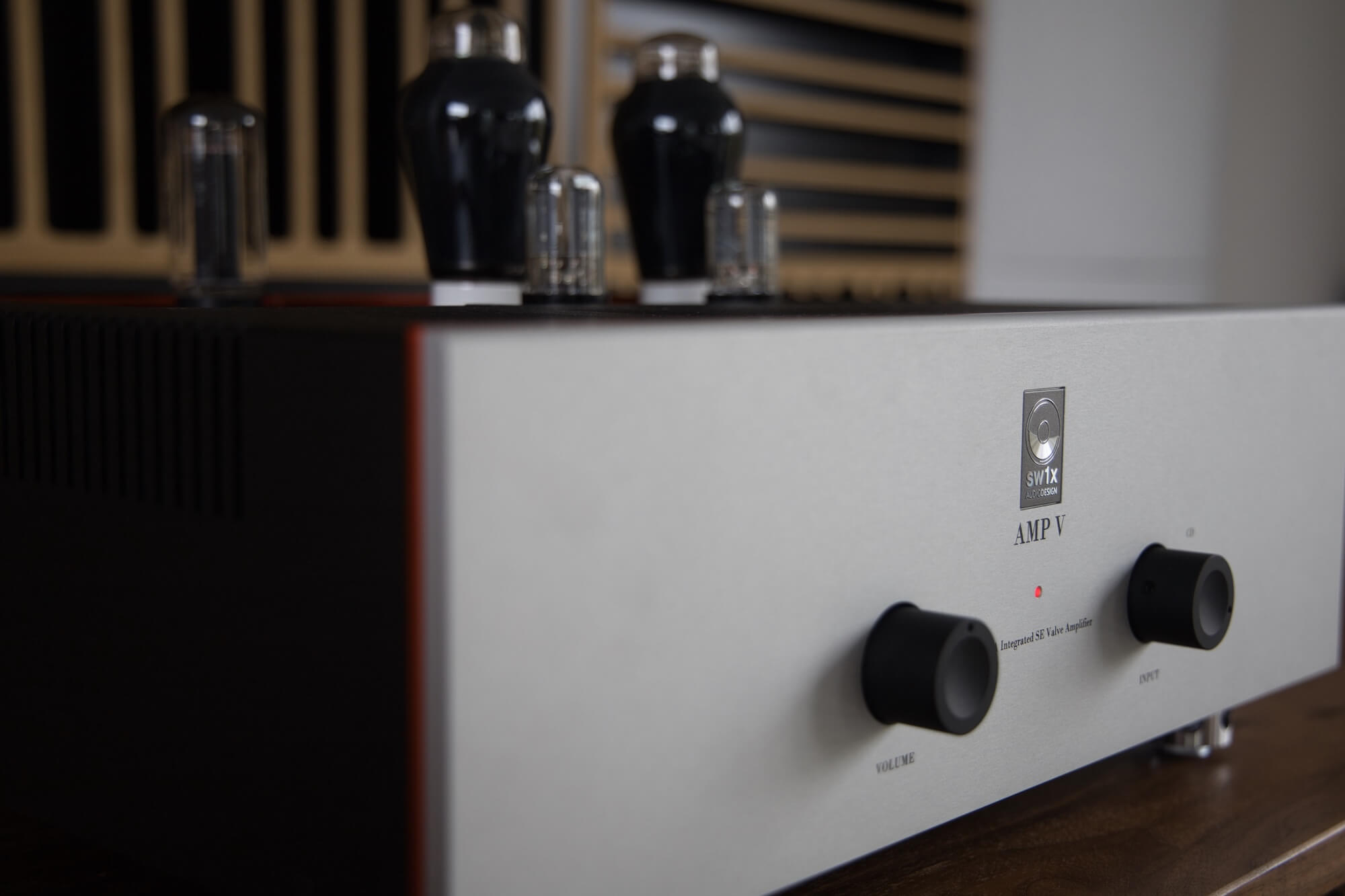
SW1X DAC III & AMP V
Two DACs were used during the session:
- SW1X DAC III
- SW1X DAC III Special Balanced
Both feature three power supplies, tube output, non-oversampling, and no digital filters — just a second-order analog filter far outside the audible range. These are pure NOS DACs with Philips TDA1541 R2R chips.The DAC III uses 6N6P output tubes. Its clock signal is generated by an E180F tube, with a dedicated EAA91 tube rectifier circuit.The DAC III Balanced uses transformer-coupled EL84 tubes for output.I/V conversion is done via a resistor directly connected to a tube’s grid — the signal path is kept as short as possible. Decoupling capacitors for the TDA1541 are Black Gates, and resistors are Allen Bradley carbon film types.
Transformers vary depending on execution: copper, copper/silver, or pure silver. Higher-grade transformers also have better core materials and different construction.
Because of the TDA1541, max supported sample rate is 96/24, working internally with the first 16 bits. According to SW1X, this increases dynamic perception and reduces quantization noise.
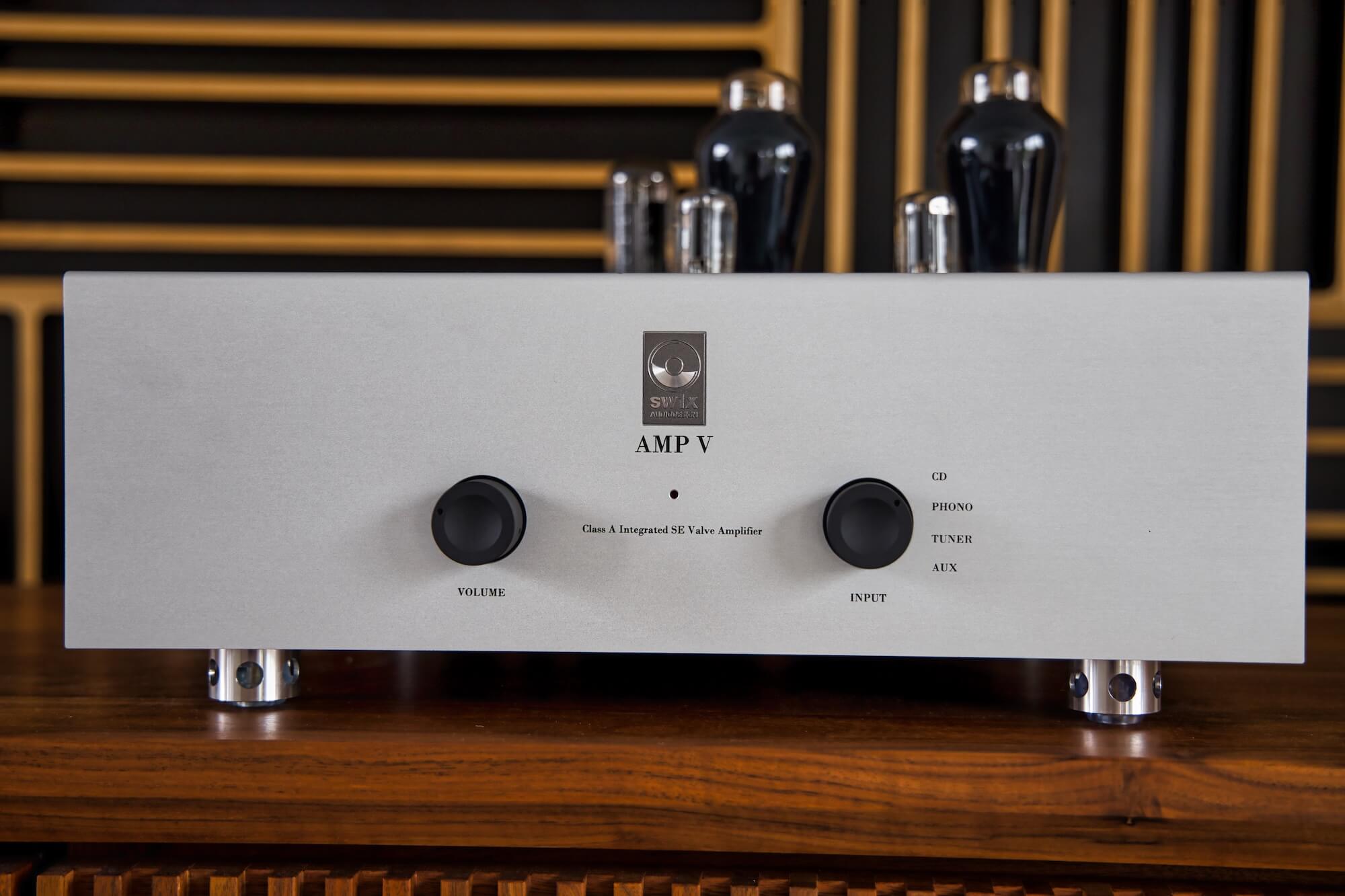
SW1X AMP V Titan
Finally, we arrive at the SW1X AMP V Titan, a single-ended tube amplifier using one 300B tube per channel — in this case, PSvane. Other tubes include 6SN7 drivers and 5AS4 rectifiers. The SW1X-designed 24-step stepped attenuator does not support remote control, so you’ll need to walk to adjust it.
There is no feedback; the amp uses directly heated triodes in Class A, with point-to-point wiring using SW1X’s own wire. Only three gain stages from input to output, with custom-wound output transformers (ours are Special Edition, copper on HiB DC core). The minimal circuit layout contributes to the amp’s quality. It effortlessly drives the Bastanis Camargue speakers. It delivers 2 x 7 Watts and can be optionally built as an AMP IV Aura with 2A3 tubes, if preferred.
When Again?
Live Fidelity often features unique products you won’t find everywhere — selected based on long-term partnerships (e.g., with Bastanis) and outstanding sound quality (e.g., SW1X). With high-efficiency speakers, whether passive or partly active, Live Fidelity can offer full setups — both analogue and digital.
On my third visit to the beautiful listening room in Utrecht, I was once again surprised by Armin Bos. Not by a flashy presentation or high volumes, but by the components and the synergy between them. We searched for the right word — and landed on PURE. But don’t confuse “pure” with sterile, analytical, or technical. At Live Fidelity, it means a reproduction not shaped by the equipment, but through the equipment — where the musical signal flows undisturbed. That sounds simple, but it’s very hard to achieve without losing or coloring something in the signal chain.
SW1X seems to have elevated the art of purity to a standard, and Bastanis makes that audible by sharing the same philosophy. The sum of the parts resulted in a stunning performance that lingered in my mind long after. I eagerly look forward to my next visit to Live Fidelity. What else might Armin Bos have in store?
Live Fidelity High-End Audio Showroom | www.livefidelity.co.uk
SW1X AMP V Titan amplifier in Special version: | 24,800 euro
SW1X VDT II Valve Digital Transport | $8,900
SW1X DAC III SPX dac | $8,900
SW1X DAC III Balanced Special dac | $17,800
Bastanis Camargue Dipol Speakers | 37,400 Euros per pair
Bastanis Camargue speakers (no dipole) | 29,950 euros per pair



